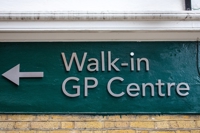
In April this year, the EU passed the Gigabit Infrastructure Act, as a means of accelerating progress towards the EU’s ‘Gigabit Society’. But while the GIA aims to open up access to network infrastructure, it could also lead to an increase in pricing disputes. The EC proposes settling these using the FRAND principle which states access to resources should be just, equitable and free of bias – but how well will this work in practice?
Building high-speed networks, faster and cheaper
In the digital age, access to high-speed internet is crucial for economic growth and social development. That’s why the EU introduced its ‘Gigabit Society’ connectivity objectives, which aim to ensure all European households have access to gigabit broadband by 2030, and all populated areas are covered by a 5G network.
But these goals remain distant. So far only 7.6% of EU households subscribe to a 1 Gbps network, mainly because of the high cost of deploying the underlying infrastructure for very-high-capacity networks (VHCNs).
To improve access, the EC proposed introducing the Gigabit Infrastructure Act (GIA), which replaces the Broadband Cost Reduction Directive (BCRD). The GIA is designed to make the deployment of new physical infrastructure easier, and to promote the joint use of existing assets. The aim is to extend the reach and lower the cost of VHCNs.
How would it do this? Mainly by broadening the definition of network operators and physical infrastructure. Assets controlled by public bodies are now included, and new asset categories have been added.
A surge in disputes
Similar to the BCRD, the GIA is aimed at championing market-based solutions for joint infrastructure use and providing a regulatory safety net when commercial agreements fail.
The Act proposes that access providers must meet access requests under “fair and reasonable terms and conditions, including price”, while ensuring “non-discriminatory terms and conditions”. If commercial negotiations fail, a dispute settlement body established by the GIA must resolve the issue within four months.
The issue for the authorities is that the GIA – which expands the range of infrastructure subject to access obligations – is likely to lead to a surge in disputes. Considering their complexity, and the tight timelines imposed for their resolution, these disputes could pose a significant challenge to mediating bodies.
What, therefore, is the best way forward?
Why do commercial negotiations fail?
In theory, negotiations between involved parties should lead to efficient outcomes, as both parties have private information that enables them to assess the economic value of the deal accurately.
But the reality is different. Commercial negotiations do often break down, slowing the roll-out of networks. This can happen for several economic reasons.
- There may be an imbalance in information between parties, and one side might fear that the other is presenting a false picture of its capabilities. Behavioural biases can also play a part, with bosses reluctant to enter into an agreement that might make their firm appear weaker.
- Negotiations can be expensive, especially when top management is involved. This can deter parties from seeing the process through to the end.
- Short-termism, driven by managerial compensation or a bias toward empire building, is another common barrier to agreement. And parties with significant market power may resist compromise.
All of these things can lead to expensive, protracted negotiation processes. In one case of negotiations between two telco operators in the UAE, it was six years before an agreement was reached.
How would the GIA settle disputes?
In the face of these challenges, the GIA advises a two-pronged approach to settling pricing disputes.
Firstly, it would seek to shorten the duration of negotiations through rapid dispute resolution.
Secondly, it suggests the application of the Fair, Reasonable, and Non-Discriminatory (FRAND) principle to pricing, offering a regulatory safety net when commercial agreements reach an impasse.
FRAND: sensible in theory, tricky in practice
The FRAND principle is widely used in the technology sector to make sure all companies can use essential patents on reasonable terms. But it’s rare to deploy it in the context of infrastructure access pricing.
In theory, implementing FRAND pricing for network access should be straightforward. It involves two steps: determining the economic value generated by access and the cost to the owner, and then allocating a share of the added value to both parties.
But in practice, this process is fraught with complications. The economic value gained from access may not be linked to the cost of building the infrastructure in the first place (which may have been built for different purposes). And asymmetries of information between the authorities applying FRAND and the parties involved make it challenging for the former to properly understand the infrastructure in question – which also contributes to difficulty in determining prices.
The nuances of market dynamics also contribute to the complexity of applying FRAND in practice. What happens when a network access provider, who also competes with access seekers in downstream markets, tries to exploit their position to negotiate unfavourable terms for their competitors?
Finally, FRAND lacks a universal definition. Instead, it relies heavily on case law interpretation, which always introduces challenges.
How could FRAND be applied in network access disputes?
Given these challenges, dispute authorities would need to consider alternate methods for setting FRAND-compliant access prices.
Traditional service-costing tools have been fundamental in establishing effective access pricing to existing network infrastructure. One widely used approach is the ‘bottom-up’ or ‘cost-plus’ method, which involves calculating the total costs involved in producing a service and then adding a fair margin to determine the price.
Benchmarking methods could also be useful. They rely on market-derived prices from comparable settings as a reference for pricing in a new context. This is often used when the market is competitive, and several operators offer similar services – such as competing TowerCos offering access to network infrastructure.
But these tools are not universally applicable. The bottom-up approach may not fit non-replicable infrastructure, and benchmarking is only effective in well-functioning markets, where competitive dynamics lead to efficient access prices.
Taking a purely systematic approach therefore has the potential to produce prices that are below the opportunity cost of providing the infrastructure, or above the point at which the access seeker is willing to pay.

As a consequence, while traditional tools could be used to inform FRAND pricing, they are not a panacea. They need to be complemented by more nuanced, context-specific solutions.
Taking a balanced approach
The GIA should aim to supplement commercial negotiations, not replace them. After all, these negotiations usually lead to efficient outcomes. In some cases though, national authorities may need to intervene.
Even when they do, negotiations may still break down. And this – at the point of last resort, in exceptional cases – is when the FRAND principle should be applied.
It is crucial that the intent of the GIA, to speed up infrastructure access and promote efficient, fair access to resources, is balanced against the practical realities of commercial negotiations and dispute resolution. The European Commission should be mindful of the possible unintended consequences of pushing for rapid dispute resolution in a complex area. The success of the GIA will depend on how well it harmonises free-market principles, regulatory guidance, and the practical challenges of infrastructure access and pricing.






